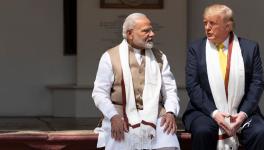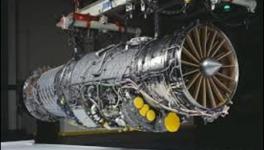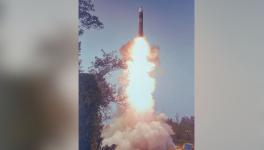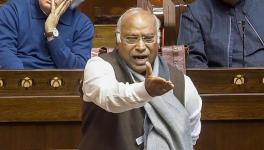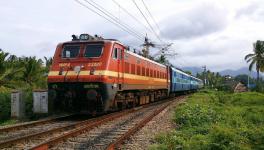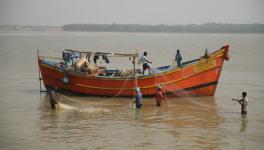Self-Reliance and Nuts & Bolts of INS Vikrant
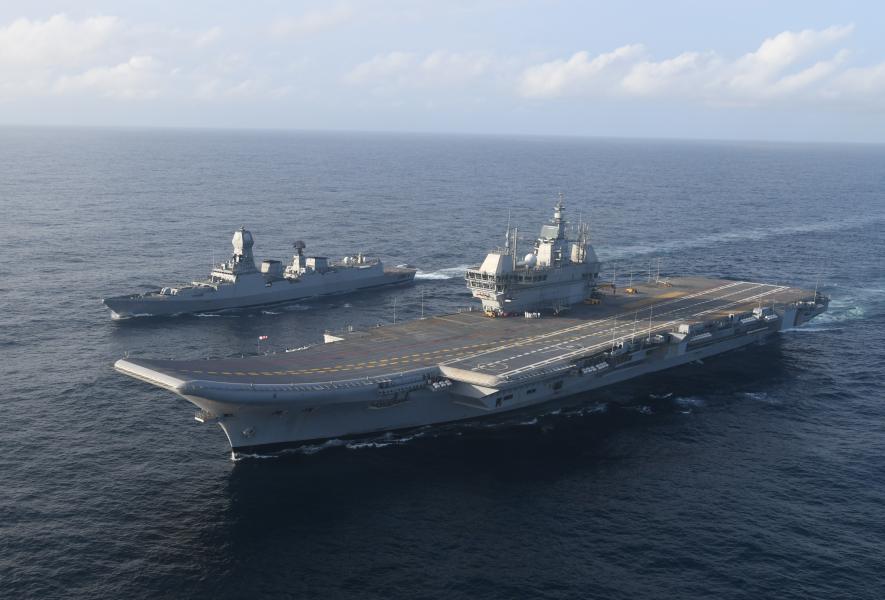
India’s first indigenously built aircraft carrier, named INS Vikrant and assigned the same ensign number R-11 as its illustrious predecessor, was commissioned and joined service with the Indian Navy on September 2, 2022 at a ceremony in Kochi in the presence of the Prime Minister and Defence Minister. Every Indian must, of course, be proud of this achievement which, with all the many hurdles it has overcome, has taken 17 long years for fruition, spanning the terms of many governments.
The Prime Minister, however, appeared to take special credit, especially for the self-reliance embodied in Vikrant. “The incomparable Amrit of Azadi ka Amrit Mahotsav is Vikrant. Vikrant is a unique reflection of India becoming self-reliant,” he said, as quoted in official releases. He further said that “INS Vikrant is a living embodiment of the Spirit of the Panch Pran” (five resolutions) that he had proclaimed from the ramparts of the Red Fort. He added that, with the introduction of a new Navy Ensign or flag on the same day, “Till now the identity of slavery remained on the flag of Indian Navy. But from today onward, inspired by Chhatrapati Shivaji, the new Navy flag will fly in the sea and in the sky.”
The Defence Minister underlined these claims and commended the Prime Minister for realising the dream of ‘Aatmanirbhar Bharat,’ issuance of three positive indigenisation lists, and earmarking of 68% of the capital procurement budget for domestic industry.
These claims call for scrutiny. In particular, are there any major steps taken by the present government that expedited the completion of the IAC-1 project, or opened up new avenues of indigenisation?
Only some of the extensive press coverage, notably in the web-based media, looked more closely at the indigenous content in the Vikrant. A few articles were hyper-critical, pointing to the many imported components, while most of the coverage echoed the government narrative of Vikrant being an outstanding symbol of India having achieved self-reliance in this important area of aircraft carriers, becoming only the sixth country after the US, Russia, the UK, France and China to make its own carrier.
As discussed below, there is indeed much to cheer in the indigenisation effort, while there is also much to learn about deficiencies in self-reliance in defence technologies and how best India can move to address these weaknesses. Can these lessons be applied in the yet-to-be-launched IAC-2 Project to make a second indigenous aircraft carrier, which the navy has set its heart on, so that along with the existing Russian-made and refurbished INS Vikramaditya (formerly Admiral Gorshkov), India can have two carriers in service at any given time on either flank of the Indian peninsula, while the third undergoes maintenance and repairs.
NAVY SELF-RELIANCE
It should be noted at the outset that the Indian Navy has been a leader among the three services as regards indigenisation, chiefly of ship-building. It has its own in-house Directorate of Naval Design and oversees ship-building at the several public sector and private shipyards around the country in a major transition effected over four to five decades from a “buyers navy” to a “builders navy.”
As of today, over 132 warships including frigates, destroyers, submarines including the nuclear-powered Arihant have been built in India with another 49 ships and submarines. Capabilities for system integration in these vessels, bringing together weapons, radar, communications and networking etc., have also been developed.
The Navy itself is acutely aware that while a substantial part of the basic “shell” of the ship or its “float” component has been successfully indigenised over the years, crucial hardware, such as the engines, specialised weapons systems like torpedoes, missiles etc, navigation and surveillance systems including radars, continue to be imported while some domestic production in collaboration with overseas manufacturers is now gradually taking place. This pattern is similar across the three services and underlines where future indigenisation efforts are needed.
Vikrant broadly reflects this pattern, gradually increasing its indigenous content which currently stands at 76% by cost, excluding the aircraft, as capabilities in Indian industry and research institutions under Defence Research and Development Organisation or DRDO and Council of Scientific and Industrial Research or CSIR have improved. Design work on the Vikrant began in 1999. The first and vital indigenisation achieved was way back in 2005 when three types of specialised steel required for warships were developed by the Steel Authority of India Ltd (SAIL) with some assistance from DRDO’s Defence Metallurgical Laboratory (DMRL) in Hyderabad.
Steel cutting for Vikrant a few years later marked the beginning of its construction. On the Vikrant, steel of these specifications are used in the main body, the portions of the structure housing heavy machinery and the aircraft landing and take-off deck which undergoes tortuous stresses. These types of steel were also to provide the essential foundation for all future shipbuilding efforts in India, including for submarines.
Several of the ship’s radar, surveillance and networking systems are indigenous, as are its combat controls systems (from Tata Advanced Systems), electronic warfare suite and data management system (from BEL), power distribution system (L&T) and integrated platform management system (BHEL). A large number of domestic companies and MSMEs (medium, small and micro enterprises) are also involved in making many of these systems and sub-systems.
In none of these developments were any special or notable measures taken under the recent dispensation since 2014 to either expedite project completion or to increase indigenous content. Advancement of self-reliance proceeds along its usual trajectory, with several achievements in areas of strength of India’s R&D and industry, and with few breakthroughs in known areas of weakness.
THE LIMITATIONS
The capabilities of the Indian Navy’s Design Bureau have clearly been tested to its limits. The Cochin Shipyards frequently complained of delays caused by slow arrival of detailed drawings from the Design Bureau. Clearly, its capabilities in terms of both scale and human resources, as well as in technical terms, need to be urgently augmented, given the planned expansion of the navy in the Indian Ocean Region.
The “move” component of the carrier is heavily import-dependent. Vikrant is powered by four General Electric (GE) LM-2500 gas turbines from the US. Engines are a glaring gap area in both aviation and shipping, as well as specialised on-road vehicles. For self-reliance to truly advance and break new ground, this weakness to develop indigenous capability in engine development must be addressed. But this will require substantial financial backing for long-term mission-oriented R&D which the extant civilian and military defence establishments are not oriented towards. Even China struggled for many years in this area but is now reported to have broken through after many long and persistent efforts.
Several foreign shipbuilding companies were also brought in over the years for consultancy services regarding integration of the engines with the vessel and its other systems. These other system integration aspects also need to be developed indigenously.
Self-reliant capabilities in missiles and related weapons systems also need to be accelerated. India has moved from Russian missiles to Israeli Barak-8 missiles made in India by Bharat Dynamics Ltd for the Vikrant, along with an Israeli AESA radar, but needs to speed up indigenous development even if it appears to be more expensive in the short term.
Vikrant also contains miscellaneous parts and sub-assemblies from multiple companies in different countries. Not only does procurement of such individual sub-assemblies from different OEMs (original equipment manufacturers) take an inordinate amount of time, especially in India’s notoriously labyrinthine procurement system, it also makes system integration and subsequent maintenance extremely difficult. It needs to be recognised that self-reliance does not mean that 100% of platforms will be indigenous but that all vital components are indigenous with other minor parts being imported efficiently without building dependence.
FIGHTER AIRCRAFT
Indecision and over-complicated decision-making procedures, with lack of clarity about who such decision-makers should be, are a major bane of defence procurement in India, and this is true for both imported as well as indigenous platforms. The Light Combat Aircraft (LCA) is a case in point with time and costs escalating hugely as performance requirements of the Indian Air Force changed many times, even the limited funds were released slowly and ineffectively, and the project itself was plagued for long by naysayers in both civilian and military leadership till necessity one day overcame all doubts, and indigenisation finally came to be favoured.
The “flight” category of Vikrant is a major victim of indecision. Whereas the 2022 date for its commissioning was well-known, there is yet no decision on the horizon as to which fighter aircraft will be on board. Some helicopters have been decided upon and acquisition has begun, such as HAL’s Advanced Light Helicopters (ALH), Russian Kamov Ka-31 “Helix” airborne early-warning choppers, and US-made Lockheed martin/Sikorsky MH-60R multi-role helicopters.
But, as regards the fighters, the original decision to acquire additional Russian MiG-29K to complement those already serving on the INS Vikramaditya carrier, has apparently been shelved due to long-standing problems with low operational availability of the aircraft which remain unsolved despite all efforts.
The choice now is supposed to be between the Rafale marine version and the late entrant Boeing F/A 18 Super Hornet designed for carrier-borne operations and with a formidable track record despite being a 40-year old platform.
Service veterans are bemoaning the indecision which is causing inordinate delays to the Vikrant entering active duty. It is difficult to believe that the decision-making for the carrier-borne fighters has been de-linked from the IAC-1 carrier project, so there is no synergy. A truly strange way to launch a carrier!
As a stand-by, the Vikrant will share the MiG-29Bs with the Vikramaditya. And in the long-term, in a decade or so, the Vikrant and IAC-2, if it sees the light of day, will be equipped with the double-engined LCA marine variant currently under development. Much more support is required for the marine LCA for true self-reliance, but is not visible.
Some straws in the wind indicate which way the wind may be blowing in the choice of fighters. If the French Rafale were to be acquired, they should have been ordered along with the 36 fighters, reducing the cost and making domestic manufacture more cost-effective, but were not. The Americans are throwing a lot of weight and incentives behind the Boeing F/A-18s, offering some domestic assembly. Also, a carrier-based assisted landing and catapult-launching system that may be required on the envisaged larger IAC-2 is one of the advanced technologies mentioned for joint-development under the Indo-US Defence Initiative. A bet on the Boeing may fetch good returns!
In any case, there is very little self-reliance here! And the positive indigenisation list consists of many small items including nuts and bolts which have inexplicably been imported till now, and the earmarked list for domestic procurement does not touch the critical advanced technologies spoken of above.
THE ENSIGN
Lastly, about the ensign, in brief. The Indian Navy, for reasons military historians will no doubt explain one day, persisted with a version of the old colonial-era ensign retaining the red St. George’s cross of the English flag although, after 1950, the British Union Jack was replaced with the Indian tricolour in the top-left quarter or canton of the ensign.
Pressure to remove the colonial vestiges grew within the Navy, especially after Australia and New Zealand had done so in the late 1960s, but a change was finally authorised by the Atal Bihari Vajpayee government in 2001, without the St. George’s Cross but, on the right or fly part, with the Navy emblem of a crest with anchor inside, topped by the Ashoka emblem in blue.
However, due to broad disfavour in the Navy, mostly due to the invisibility of the blue crest against the blue sky and water, the ensign was redesigned, this time including the red St. George’s Cross and the Indian tricolour on the canton, in the period 2014-22, till the new ensign was introduced now in September 2022, with the former Navy crest now enclosed within a dark blue octagon, a nod to Shivaji’s seal design, with an added invocation of the sea god, Varuna.
Decolonisation is a process, does not come as a bolt of lightning and, in this case too has taken time, even under the present dispensation.
The writer is with the Delhi Science Forum and All India People’s Science Network. The views are personal.
Get the latest reports & analysis with people's perspective on Protests, movements & deep analytical videos, discussions of the current affairs in your Telegram app. Subscribe to NewsClick's Telegram channel & get Real-Time updates on stories, as they get published on our website.









